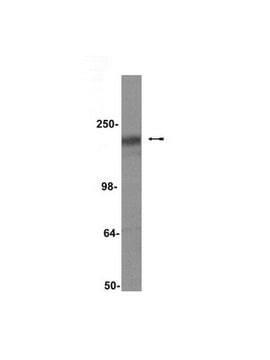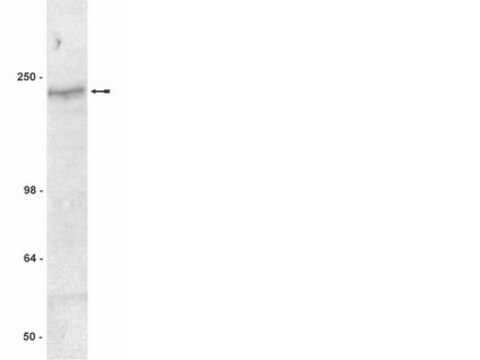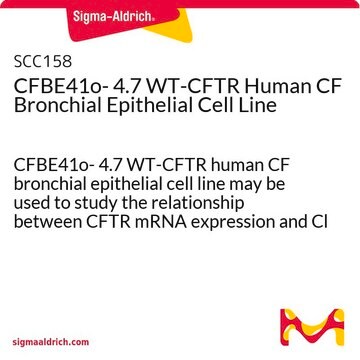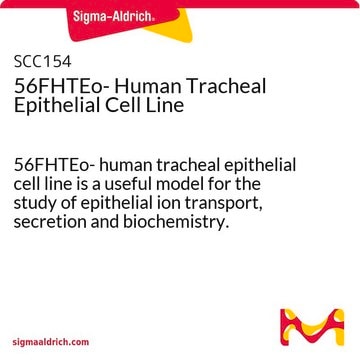MAB3484
Anti-Cystic Fibrosis Transmembrane Conductance Regulator Antibody, a.a. 386-412, clone L12B4
clone L12B4, Chemicon®, from mouse
Sinônimo(s):
CFTR
About This Item
Produtos recomendados
fonte biológica
mouse
Nível de qualidade
forma do anticorpo
purified immunoglobulin
tipo de produto de anticorpo
primary antibodies
clone
L12B4, monoclonal
reatividade de espécies
human
não deve reagir com
shark, mouse
fabricante/nome comercial
Chemicon®
técnica(s)
immunocytochemistry: suitable
immunoprecipitation (IP): suitable
western blot: suitable
Isotipo
IgG2a
nº de adesão NCBI
nº de adesão UniProt
Condições de expedição
wet ice
modificação pós-traducional do alvo
unmodified
Informações sobre genes
human ... CFTR(1080)
Especificidade
Recognizes CFTR, Mr 170kDa and two additional proteins at ~ Mr 100 and 140kDa.
Imunogênio
Aplicação
Neuroscience
Ion Channels & Transporters
Immunoprecipitation
Immunofluorescence
Note: Does not work on paraffin embedded tissue.
Optimal working dilutions must be determined by the end user.
forma física
Armazenamento e estabilidade
Outras notas
Informações legais
Exoneração de responsabilidade
Not finding the right product?
Try our Ferramenta de seleção de produtos.
recomendado
Código de classe de armazenamento
10 - Combustible liquids
Classe de risco de água (WGK)
WGK 2
Ponto de fulgor (°F)
Not applicable
Ponto de fulgor (°C)
Not applicable
Certificados de análise (COA)
Busque Certificados de análise (COA) digitando o Número do Lote do produto. Os números de lote e remessa podem ser encontrados no rótulo de um produto após a palavra “Lot” ou “Batch”.
Já possui este produto?
Encontre a documentação dos produtos que você adquiriu recentemente na biblioteca de documentos.
Artigos
16HBE14o- human bronchial epithelial cells used to model respiratory epithelium for the research of cystic fibrosis, viral pulmonary pathology (SARS-CoV), asthma, COPD, effects of smoking and air pollution. See over 5k publications.
Nossa equipe de cientistas tem experiência em todas as áreas de pesquisa, incluindo Life Sciences, ciência de materiais, síntese química, cromatografia, química analítica e muitas outras.
Entre em contato com a assistência técnica






